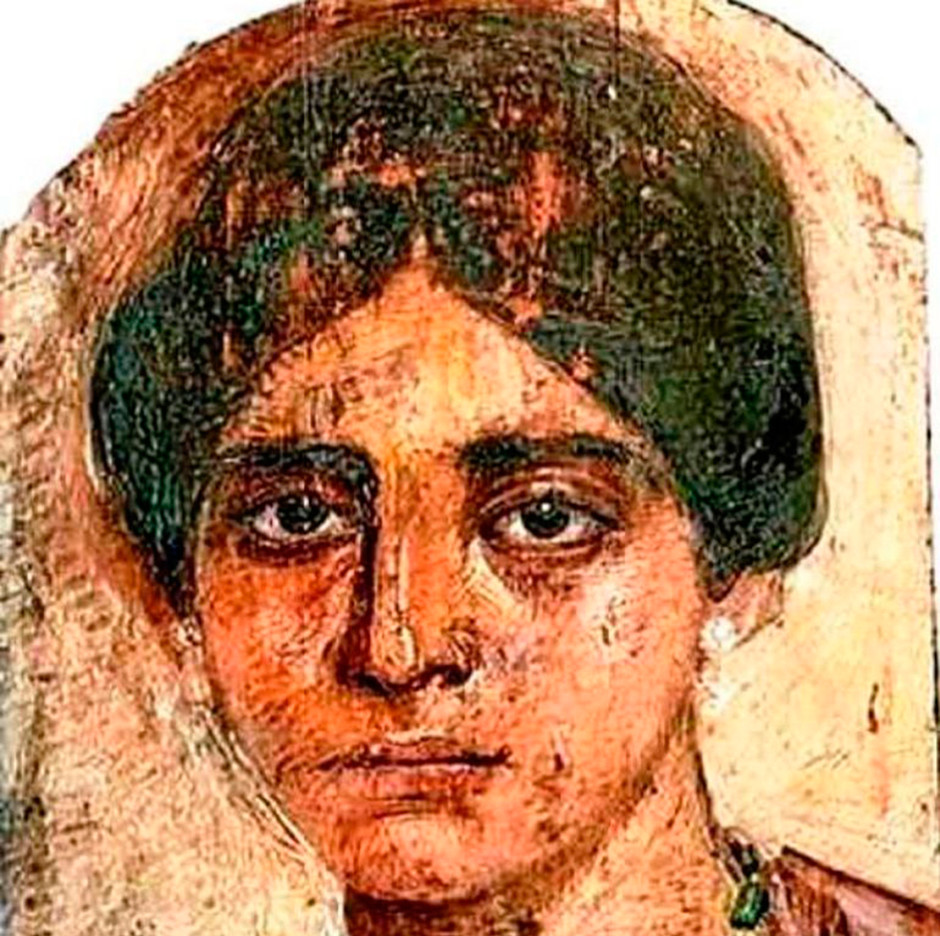Reseña
Egeria was a high lady from the Hispanic province of Gallaecia who made a trip to the Holy Land between 381-384. She gathered her impressions in the book Itinerarium ad loca sancta, written in the form of letters. It narrates the details of the journey, the places visited and describes the liturgy of the Jerusalem church. It has linguistic, geographical, historical and religious value and, above all, it has the value of having been written by a travelling woman of great religiousness, curiosity and desire to know.
Justificaciones
- She travelled to the Holy Land.
- She wrote her experiences in the book Itinerarium ad Loca Sancta.
- The work has linguistic, geographical, historical and religious value.
Biografía
Egeria was a high lady from the Hispanic province of Gallaecia who made a trip to the Holy Land between 381-384 and gathered her experiences in the book Itinerarium ad Loca Sancta, written in the form of letters.
In 1884, Gian Francesco Gamurrini found a parchment in the library of Arezzo containing a treatise by Saint Hilary and an incomplete second part, with no declared authorship. It narrated a peregrinatio or itinerarium through the Holy Land of a woman which had been transcribed in the monastery of Montecassino in the 11th century and had been transferred to Arezzo. It was attributed to Silvia of Aquitaine, but, in 1903, Mario Ferotín assigned the authorship to Egeria, taking into account a letter from Saint Valerio to some monks from El Bierzo in which he spoke of a nun who travelled from Gallaecia to the Holy Land, whom he admired for her Christian virtues.
She has been related to the family of Theodosius I and has been considered a nun or abbess because of the information from Saint Valerio and the fact that her letters are addressed to some dominae et sorores, but this is only a connotation of affection which could be translated as ladies and sisters.
In her work, Egeria opts for a simple language, the Latin spoken in the street: the sermo cotidianus, and her vocabulary is rather modest. She is a woman eager to see and learn, but she does not believe anything she is told. The character that emerges from the lines of the Itinerarium is close, warm, human and as seductive as her work.
The book is of great interest for philological studies because the text, written in Vulgar Latin at the end of the 4th century, is full of idioms. It is also an important source for the knowledge of Christianity in late antiquity as it contains first-rate information about the Holy Land, with a wealth of historical, geographical, scenic and cultural details. His descriptive chronicles of liturgies and religious services give us an accurate insight into the rituals that characterised the Christian celebrations of the time.
Egeria's intention was not to write a literary work, but rather a peregrinatio animae (journey of the soul) in epistolary form, addressed to a very specific group of friends. However, ‘it can be said that because of its freshness and intrinsic vigour Egeria's text constitutes a juicy piece of literature’ (Pascual, 2017, pp. 48-49).
Bibliografía
- Cabello, Diana (2015). “La monja viajera. ¡Una pionera más!”, en Los mensajes de Clío, (retrieved on 14/05/2021).<http://losmensajesdeclioyotrashistorias.blogspot.com/2015/08/egeria.html>
- Cid, Rosa María (2010). “Egeria, peregrina y aventurera. Relato de un viaje a Tierra Santa en el siglo IV “, en Arenal: Revista de historia de mujeres, Vol. 17(1), 5-31, (retrieved on 14/05/2021).
<https://dialnet.unirioja.es/descarga/articulo/3813714.pdf>
- Otero Pereira, Eduardo (2018). Mujeres viajeras en la Antigüedad. Los relatos de Egeria y otras viajeras. Salamanca: Ediciones Sígueme.
- Pascual, Carlos (2005). “Egeria, la Dama Peregrina”, en Arbor, 180 (711/712), p. 451-464, (retrieved on 14/05/2021). <https://doi.org/10.3989/arbor.2005.i711/712.452>
- Pascual, Carlos (2017). Viaje de Egeria. El primer relato de una viajera hispana. Madrid: La Línea del Horizonte.
Enfoque Didáctico
-CUC: Block Classical roots of today's world. Everyday life; Block Continuity of cultural heritage. Literature, art and science.
-Latin 4th ESO: Block Latin text and translation; Block Legacy and heritage;
-Latin Baccalaureate: Block The text: comprehension and translation; Block Literary education.
-Universal Literature 1st Baccalaureate: Interpretation of fragments from the Roman period of different genres and themes.
-Spanish Language and Literature ESO: Literary Education Block.
Documentos
